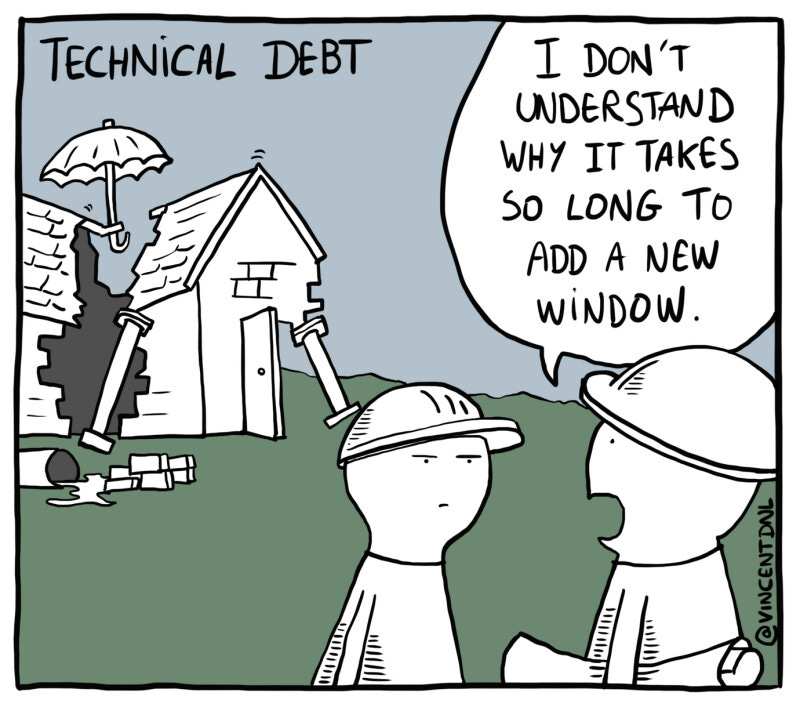Most teams agree that technical debt is a problem.
But far too often, it’s treated as a technical concern, not a strategic one.
In reality, technical debt is a business cost — one that compounds silently until it blocks product progress.
Software Is More About Maintenance Than New Development
👉 Data shows that 70–80% of a software product’s total lifecycle cost goes to maintenance.
Not new features.
Not exciting launches.
Just… keeping the current system alive.
That includes:
Troubleshooting fragile code
Rewriting messy logic
Updating dependencies and adapting to changing APIs
For every line of code you ship, expect to spend five times more effort maintaining it over time than it took to build.
Size and Software Complexity Matter
As complexity builds, teams slow down. And because the slowdown is gradual, it often goes unnoticed — until it’s too late.
Every new feature means more code.
And more code means more effort to maintain.
This is why early development feels fast: there’s no legacy, no detours.
But as the system grows, so does the burden. Developers inherit old decisions. Logic becomes tangled. Even small updates start to feel risky and slow.
The more complex the architecture, the steeper the growth curve in effort required.
Teams want to build forward — but are constantly pulled back to fix the past.
👉 Studies show that maintaining poor-quality code can require 2–3× more effort than working with clean, well-structured systems.
So Why Do We Delay It?
Because the cost of not addressing tech debt feels invisible — until it suddenly isn’t.
Teams push it aside because:
“We’ll fix it next sprint” (but we don’t)
“New features have a priority” (but they take longer each time)
“It’s not urgent” (until we’re blocked)
The longer we delay, the harder — and more expensive — it is to fix.
Making the Call: Refactor, Rebuild, or Leave It?
When tech debt builds up, you’re not facing a code issue anymore — you’re making a strategic call.
Here are the three most common paths forward:
Do nothing, accept it and leave it as is.
Refactor parts of the system
Rebuild in parallel
Each path has trade-offs. What you choose depends on timing, team maturity, product lifecycle, and business goals.
👉 Want the full breakdown?
Read the deep dive here: Technical Debt Decision-Making: Refactor, Rebuild, or Stand Pat
Have you made a business case for refactoring or rebuilding?
What worked? What didn’t?
Reply or comment — I’d love to hear your examples.
Enjoyed this Article?
Subscribe to Lean Product Growth for regular updates on building and scaling a successful product organization. Don’t miss out on insights, strategies, and actionable tips—delivered straight to your inbox.




